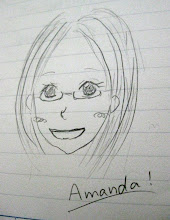This is a really long entry with pictures, so I'm inserting a break here. "Read more" for the rest!
Quick explanation. In Japanese the sounds for ku and gu are represented by the same symbol. This makes sense because the k and g sounds are made with the same mouth positions (which is true in English too!). The difference is that g is voiced and k is not. You can see this yourself by making these sounds and placing your hand on your voice box. You can feel the vibrations of the g much more than the k. We have several pairs like this, t and d or s and z for example. In Japanese these voiced sounds are noted by placing two quotation mark looking diacritical marks next to them. Ku is くand gu is ぐ. Easy enough, right?
But this game is old enough to go back to before these marks were commonly used. When I first played the game I didn’t know that. It confused me for a while because I couldn’t find the cards I was looking for, but once I finally caught on things got better. It also took me a while to figure out that the cards read from top to bottom in columns from right to left. I had no idea how the game worked until I figured that one out.
At school we play a tournament style. We play four games in groups of six, using 50 of the cards in the first two games and the other half in the second two. The Japanese teacher is the caller and hits a taiko drum before she starts to read the next card. The kids change groups every game to play against other students. They keep track of how many cards they get each game and at the end of the four rounds the students who collected the most cards are rewarded with certificates. Most of the teachers join in and play with the students.
My very first game I opted out of the first round in order to watch and figure out how the game worked. I had a basic understanding, but I needed to see it to really get it. Then I found a spot in a game and started playing. My strategy was simple. Familiarize myself with the cards that were right in front of me. Know what the first few hiragana on those cards were so I could react quickly. And in that particular game this strategy worked amazingly well.
I get almost all of my cards in this game during the first 15-25 cards called. The kids can read them much faster than I can and they know some of the poems when the first half is read so they can react much faster. There are a few cards that you can tell which card it is by the very first syllable said. I have no chance on those. But many of them are less well known and some of them are really close to each other, so the kids wait until the second half is read too. Also the tension really mounts in the second half of the game when there are less cards out and everything becomes more urgent. I do better when everyone is relaxed and slightly less competitive.
During my first ever game luck was on my side and many of the first cards called were right in front of me. The kids are always amazed and excited when I get a card. Soon I had five cards. The third grade (9th grade) girl across from me had three. Her friend, another third grader looked at how many cards we each had and started laughing. She pointed at each of us and said, 日本人。3枚 。アメリカ人。5枚。“Japanese person: three cards. American: five cards.” After that she tried to help the girl who had less than me get cards (she already had about 10 herself) so that I wouldn’t beat her and shame her for all of eternity. I managed to snatch up one more myself and ended with a very respectable six cards. My opponent got six as well and her friend continued to give her a hard time about it.
My next few games got me four and five cards. Not bad for a first timer. I can’t remember how well I did this year because I didn’t take pictures of my winnings. I was too busy having fun with my kids. But it was about 3-5 each game I think.
A final, rather touching note. This year I was in a group with a third grade boy who has a mental handicap. I’m not exactly sure what the disability is, but he just can’t keep up with the rest of the group. He was still included in the game, but after two rounds he only had 0s on his score sheet. He never really tried to get any cards because he couldn’t react fast enough, so he just sat quietly and watched everyone else. The other students in the group picked out a card and told him, “This is your card, when it’s called, you get it.” And then they set it in front of him. The game went on and when that card got called he got a big grin on his face when he picked it up. Then they gave him another card to wait for. I thought it was a really nice gesture. He was there enjoying the game with everyone, and the students made sure that he got to actually play too.















No comments:
Post a Comment